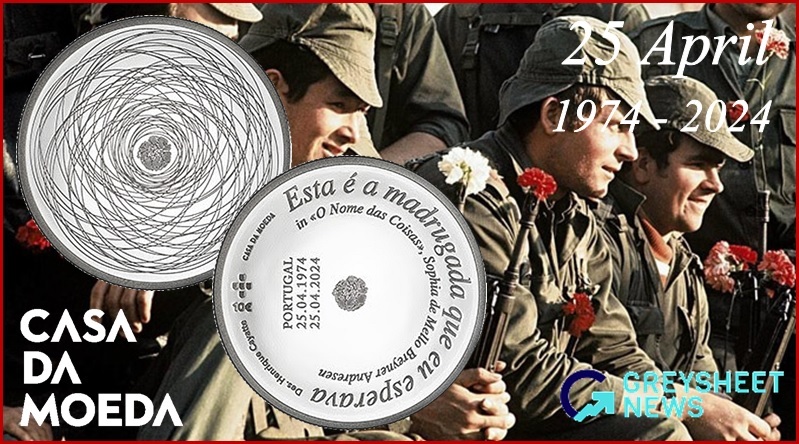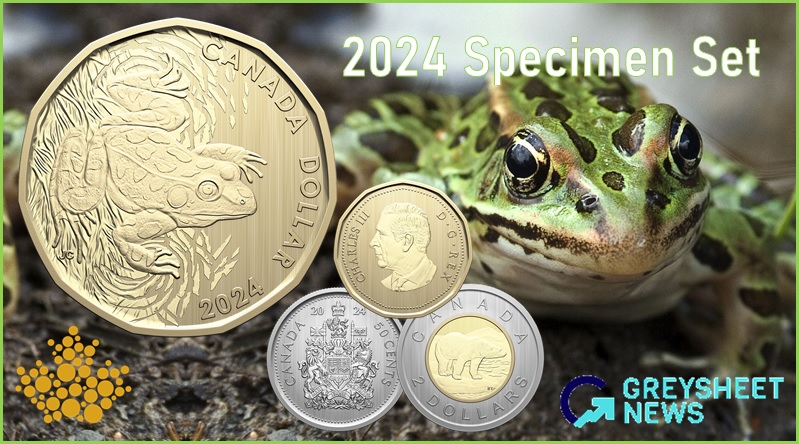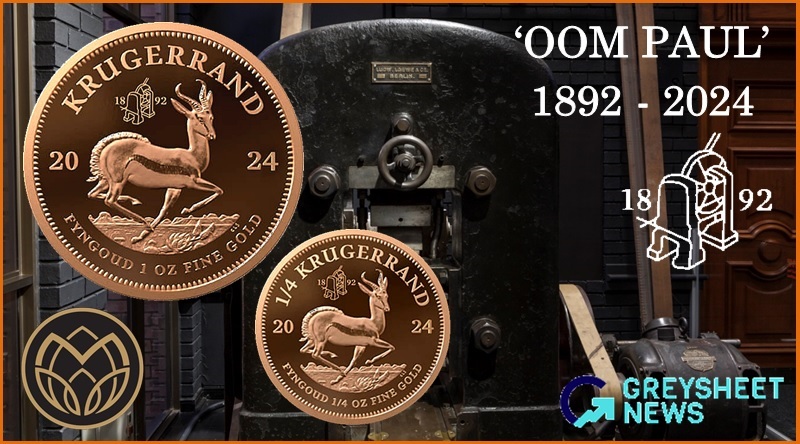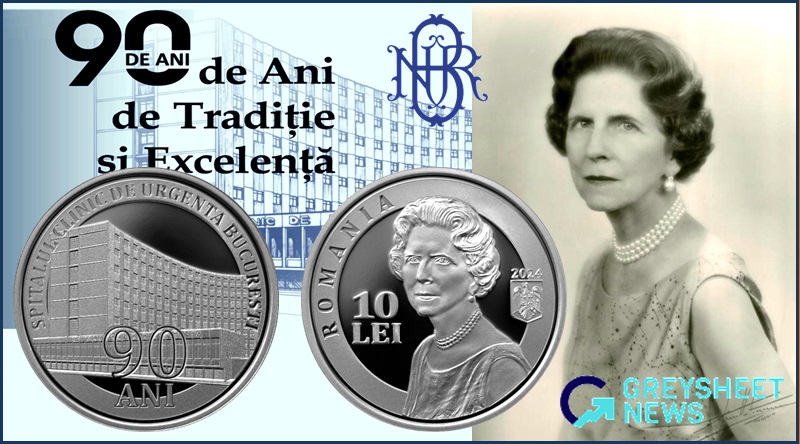Portugal: New Silver Crown and Mega-Crown Coins Released in Celebration of 50 Years of Democracy.
The Imprensa Nacional Casa da Moeda – INCM have launched new silver proof and large-size silver BU coins which remembers the 50th anniversary of Portugal’s restoration of democracy.
In 1974, the April 25 Revolution effectively put an end to more than 47 years – or exactly 17,499 days of dictatorship. The commemorative coins highlight the importance of the carnation during this national event, which swiftly became a symbol of freedom and this year marks 50 years of the restoration of democracy.
Prior to the revolution, Portugal’s government known as the Estado Novo was headed by the dictator António de Oliveira Salazar, in power from 1947 until he was replaced by Marcello Caetano in 1968. Salazar’s government was accused of persecuting any opponents of the regime through suppressions, censorship, and many other forms of intimidation. When Salazar was replaced with Caetano, there were hopes that the government would ease the restrictive policies but as parliamentary election results that same year saw wins for candidates close to Caetano, it was evident nothing would change.
As spring was arriving in 1974, the vast majority people in Portugal had enough of the dictatorship, the overseas conflicts and lack of basic freedoms. The impetus for change came at the instigation of Portugal’s military who, tired of the endless conflicts were intent on overthrowing the regime. A group of military officers formed the MFA (Armed Forces Movement) and their aim was to take control of the regime by force on the 25th April 1974. In Lisbon, soldiers in the early morning hours immediately moved in to take over the national television and radio stations, as well as Lisbon’s Airport, Military Headquarters, General Staff quarters of the Army, the Ministry of the Army, and the Banco de Portugal. Broadcasting on radio, a spokesman for the MFA read their first statement, explaining what was happening and their aim to oust the regime. Hearing the news from the MFA Spokesman prompted Miss Celeste Caeiro, a waitress in Lisbon to offer red and white carnations to the soldiers who were passing by the restaurant she worked at. They in turn, put them in their uniforms and in the muzzles of their guns, to symbolise that the revolution was peaceful. Soon, everyone had carnations and it soon became the main symbol of the uprising and the origin of the phrase ‘Carnation revolution’.
Facing a certain end to his regime, President Caetano who had escaped to safety at a military barracks in Lisbon finally surrendered to General Antonio de Spinola where soon after, he and his ministers were escorted onto plane to Madeira, where they went into exile. Just days later and as a result of the coup, a ‘Junta de Salvação Nacional’ (National Salvation Junta) was formed and introduced to the people of Portugal on a nationally televised broadcast with General Spínola named as interim President of the Republic. The results in Portugal were significant and extended to the colonies as well who saw immediate change. Recognition of the independence of the colonies was also a result of change in Lisbon. Achievements included a new constitution, universal suffrage, the creation of political parties, equal rights for married women, freedom of association, advances in health, education, and labour rights. The anniversary of the Carnation Revolution has been a national holiday in Portugal since 1975 and is celebrated with great reverence as the day the country was reborn.

Designed by Henrique Cayatte, this coin highlights 50 years of democracy. The reverse side includes the image of a single carnation, surrounded by 50 non-concentric linear circles representing the many ideas and projects born out of the restoration of democracy as well as representing the 50th anniversary of the revolution. The obverse side features a well-known verse from a poem entitled ‘April 25’ which reads ESTA É A MADRUGADA QUE EU ESPERAVA (This is the morning I've been waiting for) and is shown along the right side along the rim. Shown as a second circular inscription is the text O NOME DAS COISAS SOPHIA DE MELLO BREYNER ANDRESEN – the name of the work the poem is from and the name of the author. Also centred is a small carnation, with commemorative dates shown in vertical text PORTUGAL 25.04.1974 – 25.04.2024 placed to the left of the flower. Close to the left rim is both the Portuguese crest and denomination 10€ seen on both versions of the coin.
| Denomination | Metal | Weight | Diameter | Quality | Mintage limit |
| 10 Euro | .925 Silver | 27 g. | 40 mm. | Proof | 3,950 |
| 10 Euro | .999 Silver | 1000 g. | 100 mm. | BU - FDC | 50 |
Available from the 22nd April, the silver proof quality coins are each encapsulated and presented in a custom case made of a natural Portuguese cork base and a Perspex cover accompanied with a certificate of authenticity. For additional information on these and other coins available from the INCM, please visit their online webshop.

Download the Greysheet app for access to pricing, news, events and your subscriptions.
Subscribe Now.
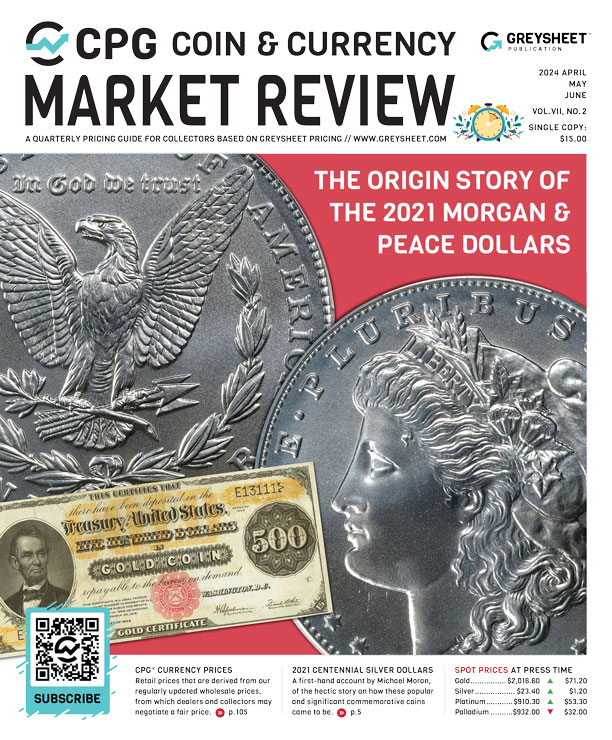
Subscribe to CPG© Coin & Currency Market Review for the industry's most respected pricing and to read more articles just like this.
Author: Michael Alexander


